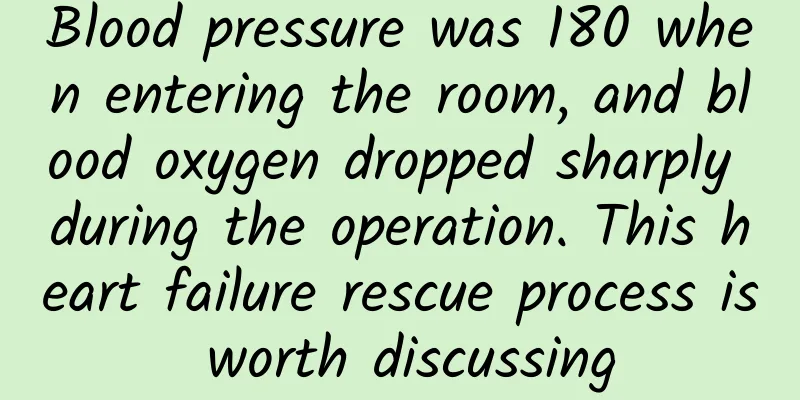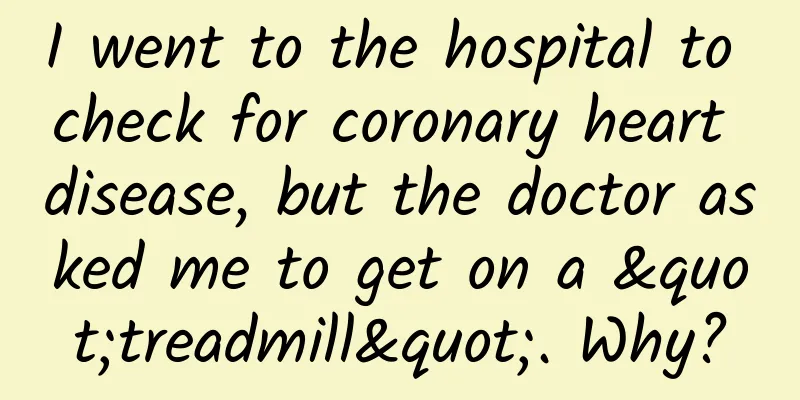Blood pressure was 180 when entering the room, and blood oxygen dropped sharply during the operation. This heart failure rescue process is worth discussing

|
Anesthesia work is like walking a tightrope every day. With artificial airways and controlled ventilation, anesthesiologists can generally handle situations calmly. However, there are some situations that can make anesthesiologists break out in a cold sweat. A serious incident occurred during an anesthesia operation not long ago. I still feel scared when I think about it. A 65-year-old male patient weighing 80 kg was undergoing TURP due to prostate hypertrophy and dysuria. Preoperative examination revealed that the patient's heart function was in Class II, and he had a history of hypertension and coronary heart disease for more than 20 years. With long-term medication control, his blood pressure was still normal, and his coronary heart disease was relatively stable. However, despite taking antihypertensive drugs before the operation, the patient's blood pressure still rose when he entered the operating room. The blood pressure was 181/96 mm Hg, the heart rate was 72 beats/min, and the pulse SpO2 was 97%. Considering that the patient was nervous due to the surgery, midazolam 3 mg was given for appropriate sedation, and the blood pressure dropped to 140/75 mm Hg. After adequate oxygen inhalation, anesthesia induction was performed. During the induction process, blood pressure once dropped to 80/50 mm Hg. After treatment with vasoactive drugs, blood pressure stabilized at around 120. 90 minutes into the operation, the patient's blood pressure suddenly dropped to 60/35 mm Hg, blood oxygen saturation dropped to 76%, and heart rate rose to 156 beats/min. Immediately check the ventilation status and auscultate both lungs. Auscultation revealed that the breath sounds were slightly coarse, but there were no bubbling sounds. Careful observation revealed that the patient's lips were dark in color. The nurse calculated that the amount of irrigation fluid used was about 7000 ml, and it was considered to be water intoxication combined with left heart failure. The oxygen flow was increased immediately to correct the hypoxic state. Ephedrine and phenylephrine were injected intravenously in divided doses to increase blood pressure, and 40 mg of methylprednisolone was given to reduce cerebral edema. After 10 minutes, the blood pressure slowly rose to 95/60 mm Hg, followed by continuous dopamine infusion. During this period, the heart rate was maintained at 130-140, with no signs of decline. 0.4 mg of cedilanidate and 20 mg of esmolol were injected intravenously in divided doses. At the same time, 20 mg of furosemide was given to protect renal function. After blood pressure, cardiotonic and diuretic rescue, the patient's vital signs stabilized after half an hour. During the period, blood gas was checked, K3.21mmol/L, Na 134.2mmol/L, Cl 98.3mmol/L, PaO2 65.3mmHg, PaCO2 40.7mmHg, SaO2 91.5%, HCO3-22.6mmol/L, blood sugar 18mmol/L. 20 units of insulin were given to adjust blood sugar, and KCl1g was given to supplement potassium. One hour after the operation, vasoactive drugs were gradually reduced, and all drugs were stopped after 2 hours, and the patient was successfully extubated. The lesson from this case is that when an intubated patient suddenly experiences a drop in blood oxygen, the cause needs to be identified and corrected immediately. When it is determined that there is no ventilation problem, if there is no massive blood loss or extremely low blood pressure, the patient's ventilation problem should be considered immediately. If there is a problem with pulmonary ventilation during a surgery that may cause pulmonary edema or pulmonary embolism, a problem with the lungs should be highly suspected. Once there is a problem with the lungs, the cause should be addressed immediately. In this case, a large amount of lavage fluid was administered during the operation, and the preoperative hypertension and coronary heart disease made it very likely that pulmonary edema and heart failure occurred. Therefore, volume overload and heart failure should be actively corrected. During the treatment, continuous dopamine infusion maintains blood pressure, which can ensure adequate blood perfusion to the kidneys and surrounding tissues, dilate renal blood vessels, and increase glomerular filtration rate. Using digitalis and beta-blockers and controlling fluid intake are beneficial to the improvement of heart failure. In addition, pay attention to the eyelids. If signs of cerebral edema occur, dehydration therapy and glucocorticoids should be given to reduce intracranial pressure. Finally, we raise a question: Some people say that when elderly patients with comorbidities undergo TURP, spinal anesthesia should be given priority to keep the patient awake as much as possible. Once symptoms such as irritability, shortness of breath, and impaired consciousness appear, problems can be discovered early. So, what do you think? [Warm Tips] Follow us, there are a lot of professional medical knowledge here, revealing the secrets of surgical anesthesia for you~ |
<<: 【Health Lecture】One article will help you understand arrhythmia
Recommend
What causes chest pain in women?
I believe that every girl will encounter breast p...
The truth that 95% of people don’t know! Is it the cause of abdominal pain and fever?
Cholecystitis, a seemingly insignificant disease,...
Bladder instillation - a "chemotherapy spa" for the bladder
As the human body's urine storage organ, the ...
What to eat for plasma cell mastitis
Plasma cell mastitis is extremely harmful to wome...
Can you tell if your blood vessels are blocked by running? Cardiovascular doctors debunk rumors: It's not that simple
Once the blood vessels are blocked, our organ tis...
Efficacy and function of eating wine lees for women
Jiangmi wine, also known as rice wine, rice wine....
How to treat hemorrhoids in women
The incidence of hemorrhoids in women is often hi...
What causes female endocrine disorders?
"Endocrine imbalance", a very strange &...
What causes blisters on the lower body?
In life, many people pay great attention to their...
Is it normal to have less vaginal discharge during ovulation?
Since every woman's physical health is differ...
What vitamins should women take to lighten spots
Nowadays, people pay more and more attention to m...
What is the cause of pain in the right breast of women?
Women should pay attention to right breast pain, ...
The reason why women have blood in their vaginal discharge
All women will have leucorrhea. Generally speakin...
They sold you cancer, but said it was a way to keep healthy.
This article was reviewed by Pa Li Ze, chief phys...
More and more people are diagnosed with thyroid problems. Is it caused by staying up late and being under a lot of stress?
Many people have similar doubts: going to the hos...









